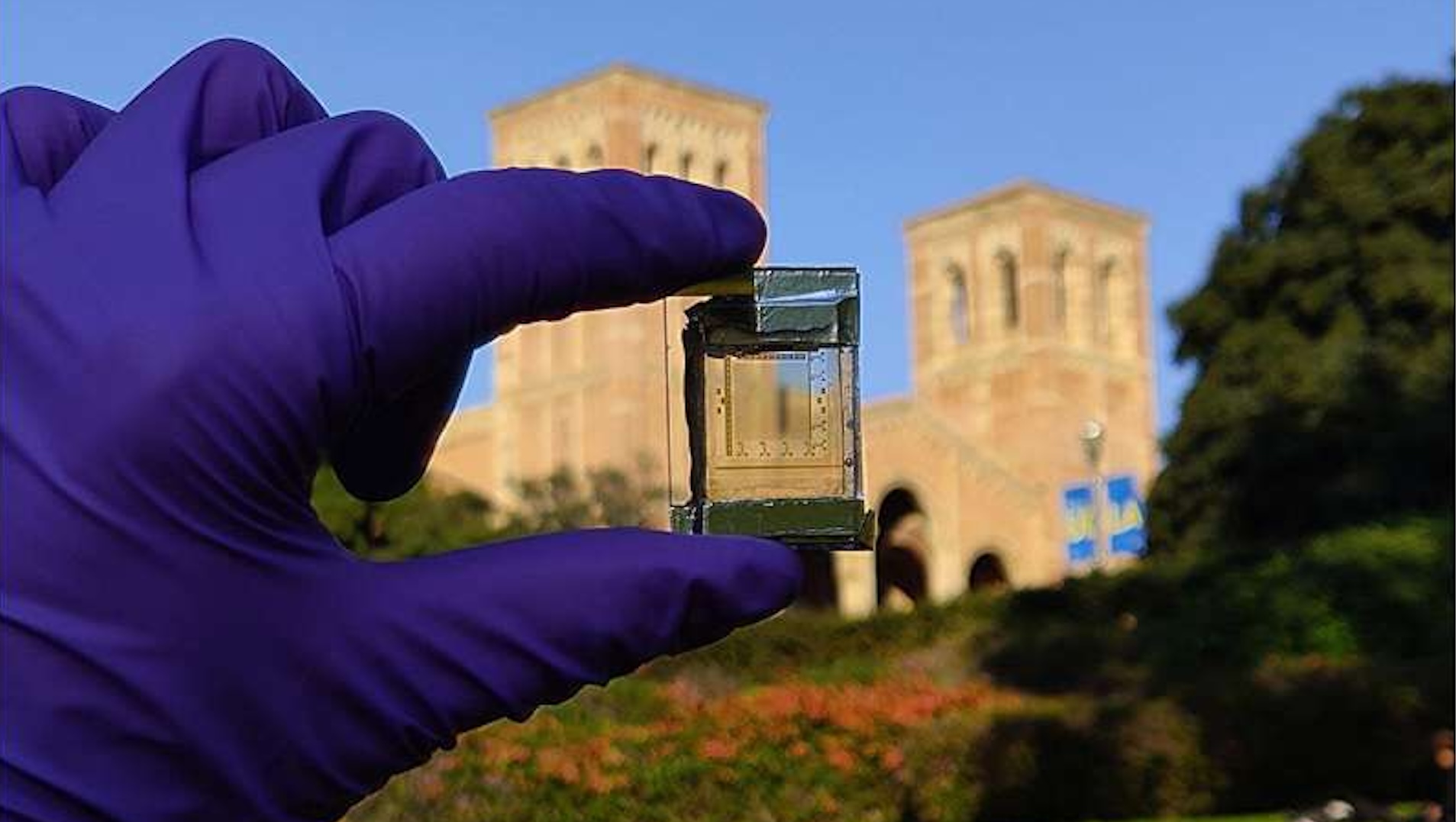Tiny, transparent chip could transform your smartphone into a professional-grade camera
Scientists built a "smart filter" that can work with a cheap smartphone camera to transform low-resolution photos into supersharp images without glare and other issues.

An experimental two-dimensional semiconductor can harness the power of ambient light to serve as a "smart filter" and vastly improve the quality of photos taken with cheap cameras.
The platform, which measures 0.4 by 0.4 inch (1 by 1 centimeter), is made of a 100-by-100-pixel array that is just a few atoms thick — meaning the chip is transparent. The device was described in a study published March 18 in the journal Nature Communications.
Each of the 10,000 pixels in the filter is an "optoelectronic neuron," the name the scientists have given the structure they built. Each structure consists of a transparent phototransistor, which converts light particles into electrons, and a liquid crystal modulator that forms a layer when all pixels are combined. This layer was then connected to an array of electrodes.
This visual computing platform responds to ambient light and adjusts the pixels to make them partially transparent or opaque to reduce bright spots or glare selectively. In experiments, the scientists combined the smartphone camera with the filter to reduce glare in images taken with a smartphone camera.
As well as opening the door to higher-quality smartphone images, this technology can be used in sensing and detection systems, such as those found in autonomous vehicles, or to find tiny defects in robot assembly lines, the researchers said. These cost far too much for the average consumer and are used in more scientific and industrial settings.
"An inexpensive device measuring a couple of centimeters could make a low-powered camera work like a super-resolution camera," study co-author Aydogan Ozcan, a professor of electrical and computer engineering at UCLA, said in a statement. "That would democratize access to high-resolution imaging and sensing."
Sign up for the Live Science daily newsletter now
Get the world’s most fascinating discoveries delivered straight to your inbox.
Light-based computing is an emerging field with many experiments producing prototype devices and chips. For example, scientists recently proposed a light-powered processor that could power a superhuman artificial intelligence (AI) system. Another team recently proposed a similar chip that can be fitted into existing components to speed up AI training.
But light-based computing conventionally needs high-powered infrared lasers to work. These operate in the narrow band of the electromagnetic spectrum and absorb light over time, which can slow down processing times, the UCLA scientists said in the statement.
The alternative is to use energy-inefficient materials that can absorb plenty of light but are useless in applications that need transparency — such as photography — because they're far too thick.
The difference between previous efforts and this new "smart filter" is that it works using low-power ambient light that you can find anywhere instead of high-powered lasers and uses a 2D transparent semiconductor material.

Keumars is the technology editor at Live Science. He has written for a variety of publications including ITPro, The Week Digital, ComputerActive, The Independent, The Observer, Metro and TechRadar Pro. He has worked as a technology journalist for more than five years, having previously held the role of features editor with ITPro. He is an NCTJ-qualified journalist and has a degree in biomedical sciences from Queen Mary, University of London. He's also registered as a foundational chartered manager with the Chartered Management Institute (CMI), having qualified as a Level 3 Team leader with distinction in 2023.










